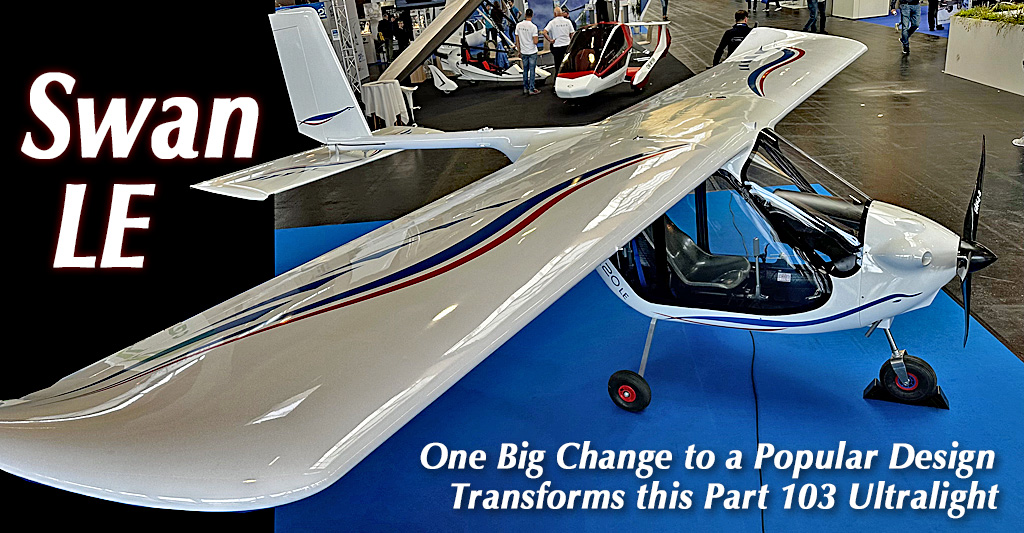
Aeromarine LSA’s Chip Erwin is one but certainly not the only busy fellow in the modern Part 103 aircraft space. AVI’s Radu Berceanu is another a man on the move. Chip works in metal. Radu works in composite. You know Chip better (he’s adept at PR) but you probably know Radu’s designs. Readers have responded enthusiastically to articles and videos about Swan. In an earlier article I promised a video look. Now that the flying season is easing into the holidays, I have more time to spend editing videos. What takes a few minutes to shoot takes hours to edit but I’m pleased to let you hear from Radu himself. His English is quite good and you get a lot of views of the new & improved Swan, now called Swan LE. Fresh Swan Retake The article from April this year had additional detail for Swan LE and mentions Dracula, the subject of a future video and article.


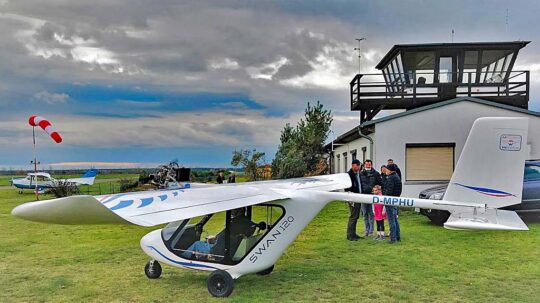

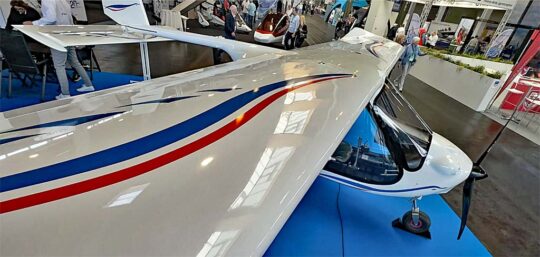 LE for Lowered Engine
LE for Lowered Engine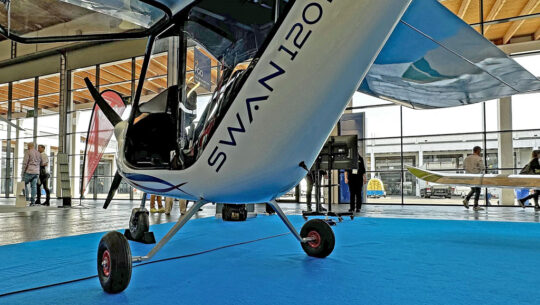 While a nearby image shows how smoothly an electric motor fit on the older Swan, now all that hardware can be tucked inside the nose for reduced drag. AVI already has good experience with the electric for those interested in that option.
While a nearby image shows how smoothly an electric motor fit on the older Swan, now all that hardware can be tucked inside the nose for reduced drag. AVI already has good experience with the electric for those interested in that option.
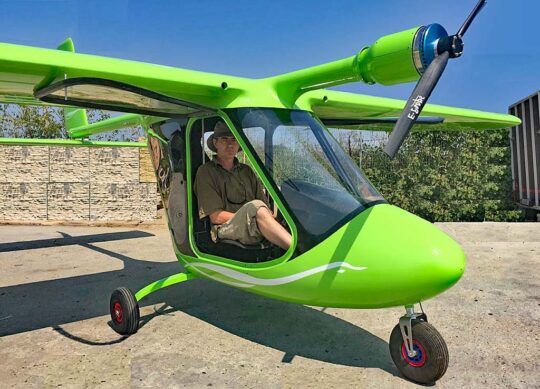
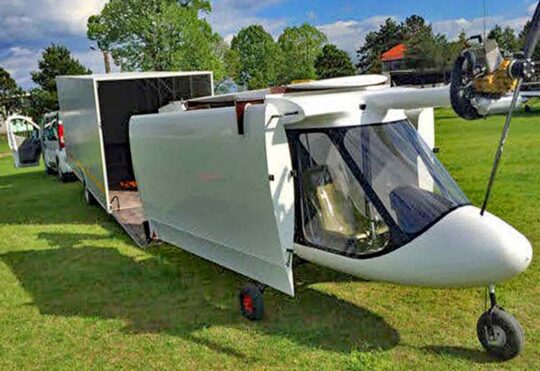
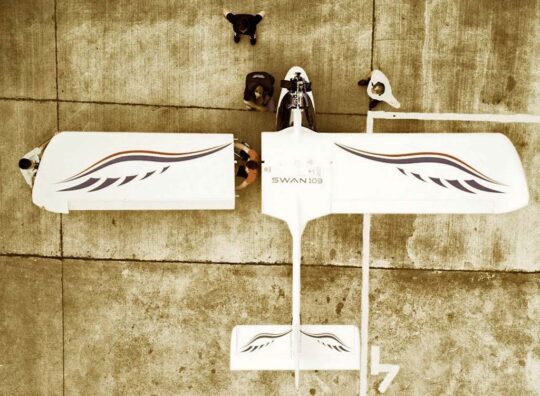 Not a Kit
Not a Kit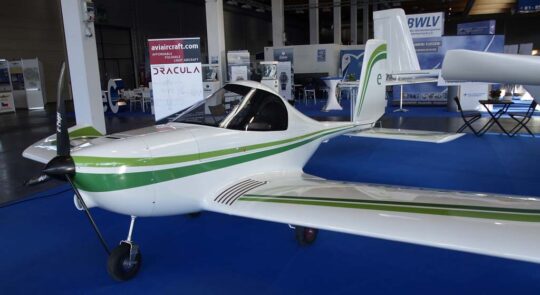
 Fully refreshed from earlier Swan designs, Swan LE debuted at Aero 2023 where I interviewed the designer. This video includes close-up views of various aspects of Swan LE.
https://youtu.be/DQgFkfCnDs0?si=1k6bi1iIN-AooC8P
Fully refreshed from earlier Swan designs, Swan LE debuted at Aero 2023 where I interviewed the designer. This video includes close-up views of various aspects of Swan LE.
https://youtu.be/DQgFkfCnDs0?si=1k6bi1iIN-AooC8P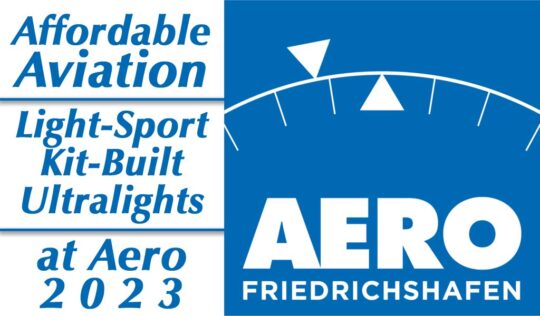 One was easy to pick out as new. The other initially fooled me. In the Aero event I missed last year due to Covid (and the prior two years that were cancelled due to government Covid restrictions), AVI developers have been busy.
One was easy to pick out as new. The other initially fooled me. In the Aero event I missed last year due to Covid (and the prior two years that were cancelled due to government Covid restrictions), AVI developers have been busy.
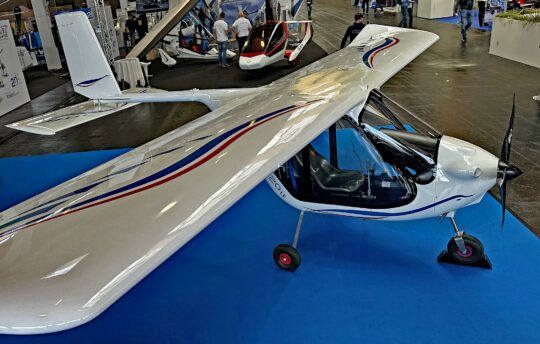 In addition to dashing lines, especially for a Part 103 ultralight, AVI Aircraft models are affordable. I am aware that word means something different to every pilot, yet in 2023 a ready-to-fly aircraft that looks like Swan in the low $30,000s
In addition to dashing lines, especially for a Part 103 ultralight, AVI Aircraft models are affordable. I am aware that word means something different to every pilot, yet in 2023 a ready-to-fly aircraft that looks like Swan in the low $30,000s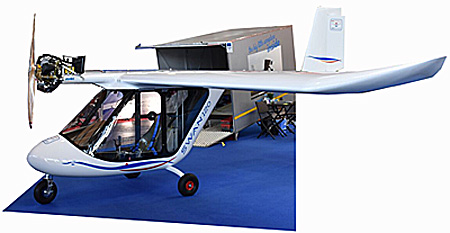
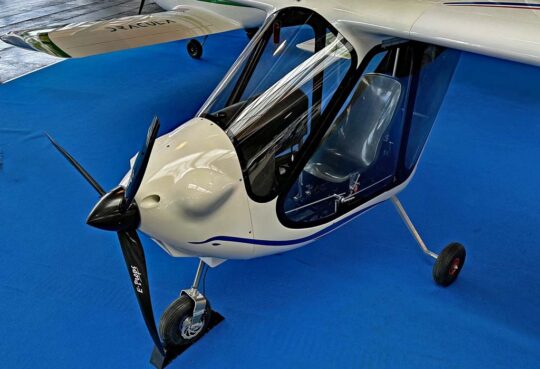 Under the cowling is… well, your choice. Both new AVI models offer the Polini 303 with 38 horsepower, making Swan lively and able to achieve short takeoffs. Or, you can have an equally powerful (28 kW or 37.5 hp) electric propulsion unit. AVI has offered electric for several years, time enough to work out the installation and operation.
Inside Swan LE looks the same except for the higher threshold. The helicopter-like, centrally-formed instrument panel allows generous forward and down visibility. Given its cantilevered construction, Swan LE doesn't need wingstruts that obstruct side visibility. The revised model retains that amazing fold-down capability (described in
Under the cowling is… well, your choice. Both new AVI models offer the Polini 303 with 38 horsepower, making Swan lively and able to achieve short takeoffs. Or, you can have an equally powerful (28 kW or 37.5 hp) electric propulsion unit. AVI has offered electric for several years, time enough to work out the installation and operation.
Inside Swan LE looks the same except for the higher threshold. The helicopter-like, centrally-formed instrument panel allows generous forward and down visibility. Given its cantilevered construction, Swan LE doesn't need wingstruts that obstruct side visibility. The revised model retains that amazing fold-down capability (described in 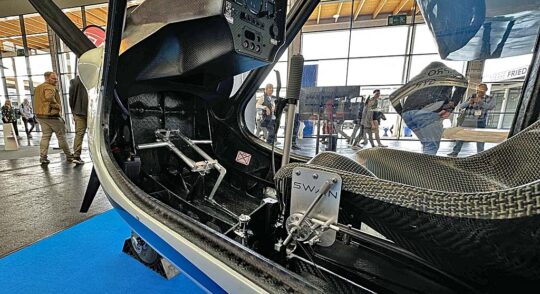 Swan at Aero was badged "Swan 120 LE" as it is approved under Germany's 120-Kilo Class. However, in our discussion, Radu stressed more than once that both Swan and Dracula can conform to U.S. Part 103 with minor changes, which he has already engineered and produced. The earlier boom-engine Swan has already proved itself capable of meeting Part 103, according to importer Tom Bartlett, AVI Aircraft's U.S. distributor (
Swan at Aero was badged "Swan 120 LE" as it is approved under Germany's 120-Kilo Class. However, in our discussion, Radu stressed more than once that both Swan and Dracula can conform to U.S. Part 103 with minor changes, which he has already engineered and produced. The earlier boom-engine Swan has already proved itself capable of meeting Part 103, according to importer Tom Bartlett, AVI Aircraft's U.S. distributor (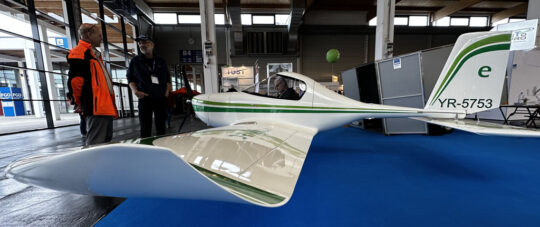 One example is the wing-remove, tail-boom-fold method of disassembling Dracula for transport. Radu indicated that Dracula would fit the impossibly-small trailer just as Swan LE does. Given significant waits for hangar space at many airports, a small trailer could be the deciding factor for some potential buyers. Towing this small trailer around, almost no one would believe you have an airplane inside. A small trailer is also lightweight so towing with a smaller vehicle should not prove challenging.
A single threaded pin is removed to detach the wings. The tail feathers also remove quickly. A hinge in the boom allows it to be folded forward, enabling the entire plane to fit in a space just 6 feet wide by 12 feet long by 6.5 feet high, which is the box size of a standard 6x12 enclosed trailer. "In turn, it can just as easily be reassembled and ready to fly in a matter of minutes with experience and a second pair of hands," said Tom. "We are working on a custom trailer that makes it easy to load, provides exceptional protection in transit, and allows for one-person assembly."
One example is the wing-remove, tail-boom-fold method of disassembling Dracula for transport. Radu indicated that Dracula would fit the impossibly-small trailer just as Swan LE does. Given significant waits for hangar space at many airports, a small trailer could be the deciding factor for some potential buyers. Towing this small trailer around, almost no one would believe you have an airplane inside. A small trailer is also lightweight so towing with a smaller vehicle should not prove challenging.
A single threaded pin is removed to detach the wings. The tail feathers also remove quickly. A hinge in the boom allows it to be folded forward, enabling the entire plane to fit in a space just 6 feet wide by 12 feet long by 6.5 feet high, which is the box size of a standard 6x12 enclosed trailer. "In turn, it can just as easily be reassembled and ready to fly in a matter of minutes with experience and a second pair of hands," said Tom. "We are working on a custom trailer that makes it easy to load, provides exceptional protection in transit, and allows for one-person assembly."
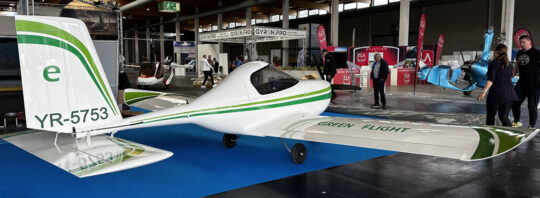
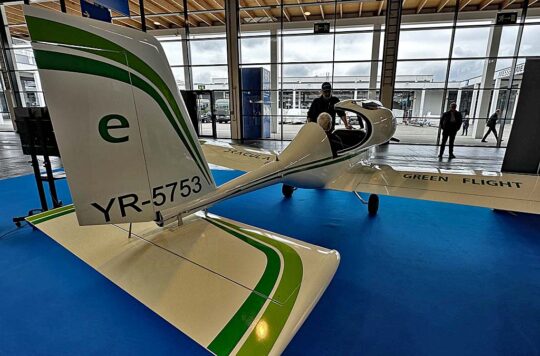
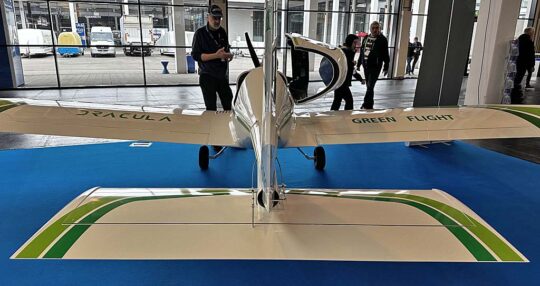 What else does AVI do?
What else does AVI do?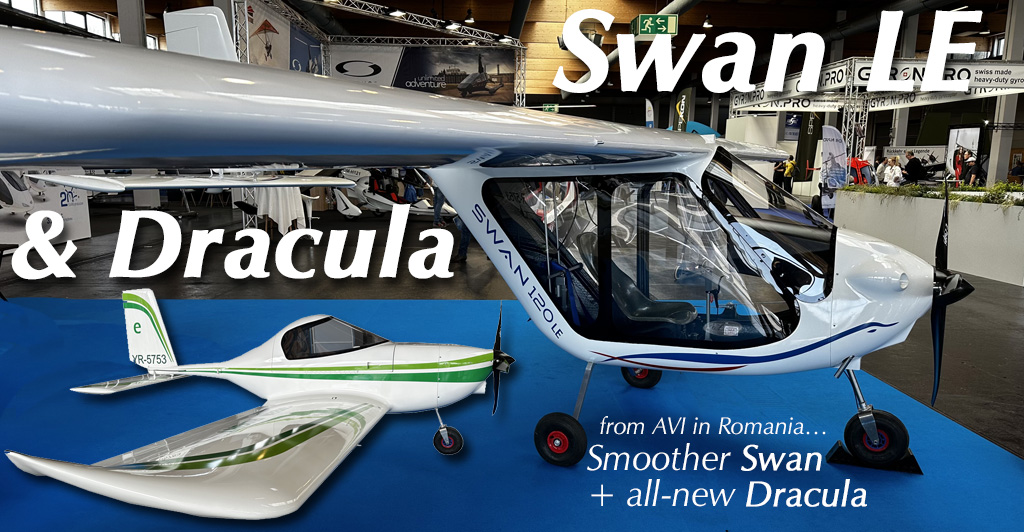
 This is the 14th running of the popular show in Mt. Vernon, Illinois. It's what I call an intimate, sector-specific show. By that I mean it is all the sort of aircraft I cover on this website… Light-Sport Aircraft, Sport Pilot-eligible kit aircraft, and ultralight aircraft.
This is the 14th running of the popular show in Mt. Vernon, Illinois. It's what I call an intimate, sector-specific show. By that I mean it is all the sort of aircraft I cover on this website… Light-Sport Aircraft, Sport Pilot-eligible kit aircraft, and ultralight aircraft.
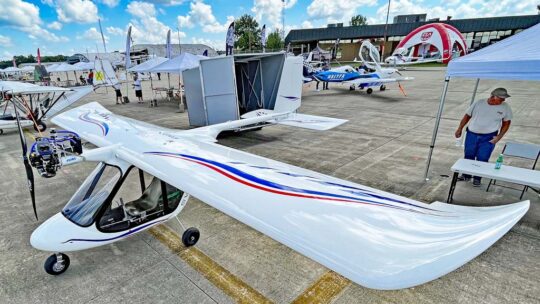 Thursday is regarded as one of the slower days of the three-day event — some vendors only attend on Friday and Saturday. Yet at least two airplanes and maybe three or four were sold on opening day. It was a nearly perfect day to go for a demonstration flight and many did.
People often ask me why they should go to a show that is smaller than the giants of Oshkosh or Sun 'n Fun. One of my answers is that I see most of the same vendors year after year. They would not do that if the show did not produce results for them and that means new owners leave Mt. Vernon with a big smile on their faces.
Thursday is regarded as one of the slower days of the three-day event — some vendors only attend on Friday and Saturday. Yet at least two airplanes and maybe three or four were sold on opening day. It was a nearly perfect day to go for a demonstration flight and many did.
People often ask me why they should go to a show that is smaller than the giants of Oshkosh or Sun 'n Fun. One of my answers is that I see most of the same vendors year after year. They would not do that if the show did not produce results for them and that means new owners leave Mt. Vernon with a big smile on their faces.
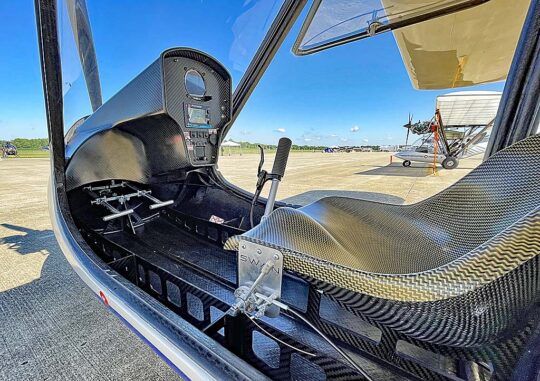 I have written about Swan in various articles and the Romanian
I have written about Swan in various articles and the Romanian 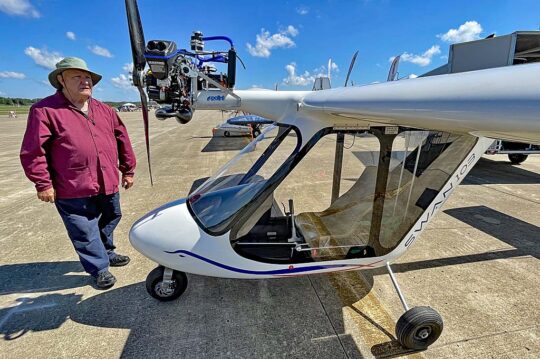
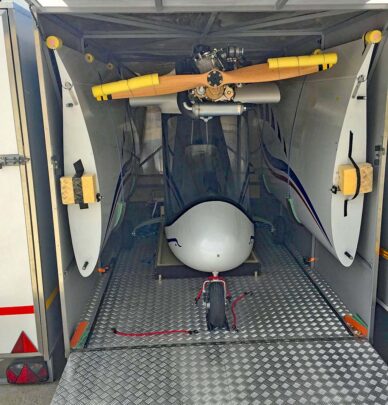 "Swan 103 is specifically designed to meet all requirements for the FAR Part 103 category," stated AVI Aircraft. Swan 103 was to be displayed in an exhibit hosted by "AVI Aircraft's USA representative, Mr. Tom Bartlett, who will also facilitate all sales of AVI Aircraft airplanes to the USA."
Radu is AVI Group's owner and president. He started developing AVI Group's aviation division in 2015.
Tom finally got the airplane through U.S. Customs and transported Swan 103 in its tiny factory trailer directly from the East Coast shipping broker to Mt. Vernon for the Midwest LSA Expo.
The six-minute video below will provide a good overall look at Swan 103 as built specifically for the U.S. Part 103 market.
"Swan 103 is specifically designed to meet all requirements for the FAR Part 103 category," stated AVI Aircraft. Swan 103 was to be displayed in an exhibit hosted by "AVI Aircraft's USA representative, Mr. Tom Bartlett, who will also facilitate all sales of AVI Aircraft airplanes to the USA."
Radu is AVI Group's owner and president. He started developing AVI Group's aviation division in 2015.
Tom finally got the airplane through U.S. Customs and transported Swan 103 in its tiny factory trailer directly from the East Coast shipping broker to Mt. Vernon for the Midwest LSA Expo.
The six-minute video below will provide a good overall look at Swan 103 as built specifically for the U.S. Part 103 market.
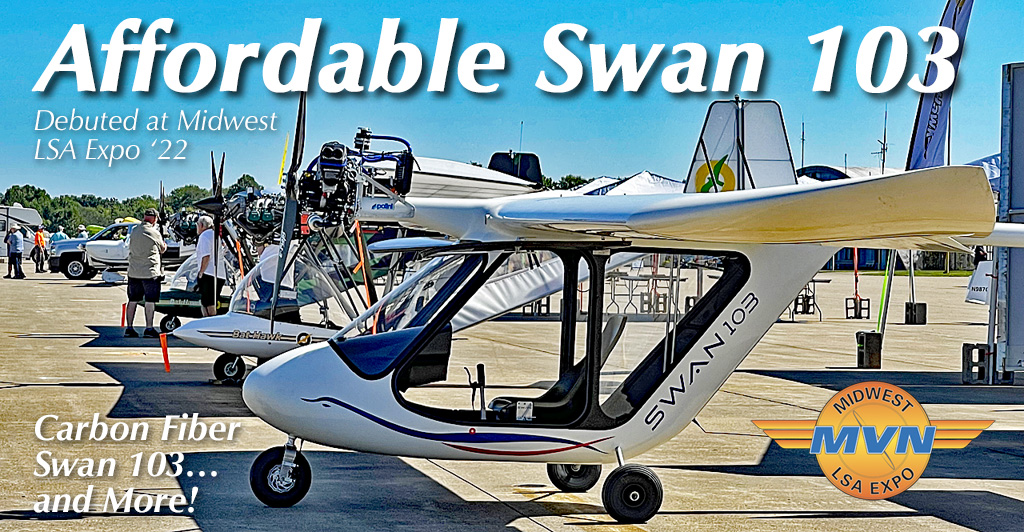
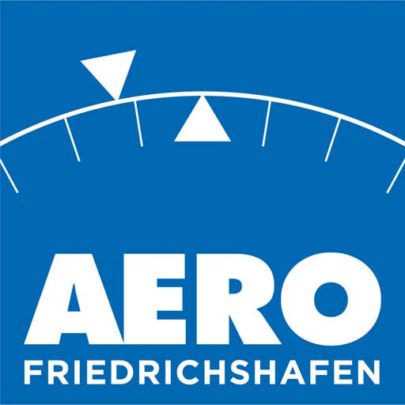
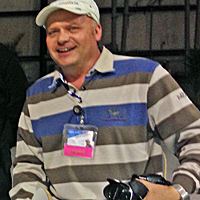 People that know Marino — many of you pilots, but nearly every producer — are aware he is an energetic, superbly-informed, and technically-competent individual. I am pleased to present his work in this and additional articles to follow from the recently-completed Aero Friendrichshafen show in southern Germany.
In this article, Marino provides a short bit about six interesting projects. Some of these you know; some you don't.
I hope you enjoy Marino's quick tour. Look for more… soon.
People that know Marino — many of you pilots, but nearly every producer — are aware he is an energetic, superbly-informed, and technically-competent individual. I am pleased to present his work in this and additional articles to follow from the recently-completed Aero Friendrichshafen show in southern Germany.
In this article, Marino provides a short bit about six interesting projects. Some of these you know; some you don't.
I hope you enjoy Marino's quick tour. Look for more… soon. 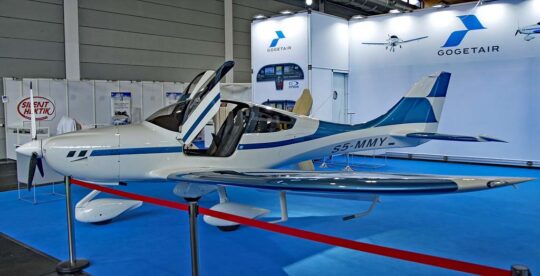
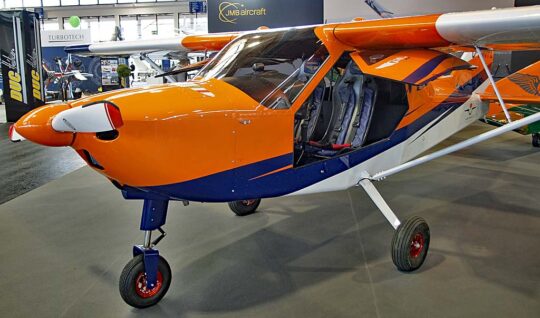
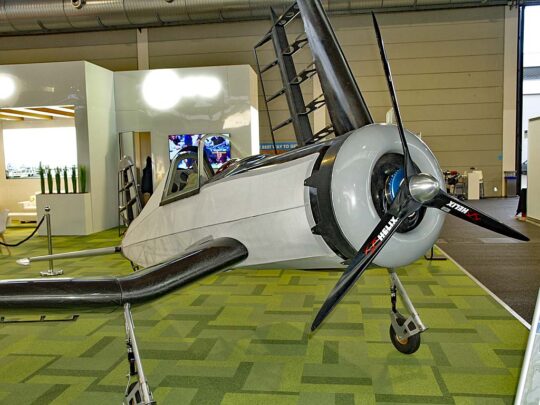
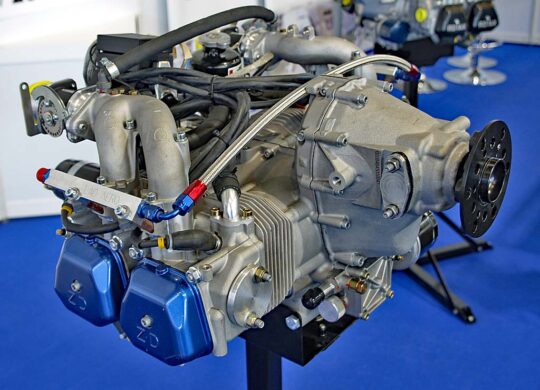
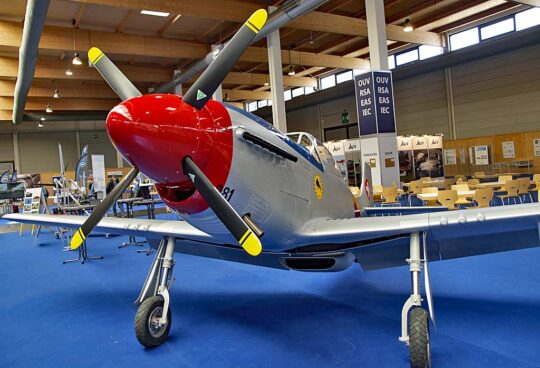
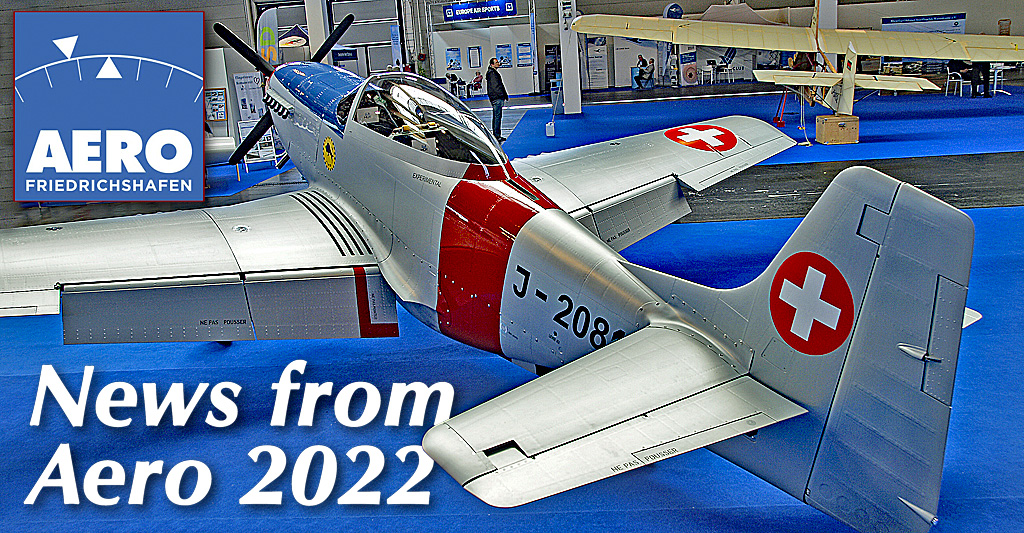
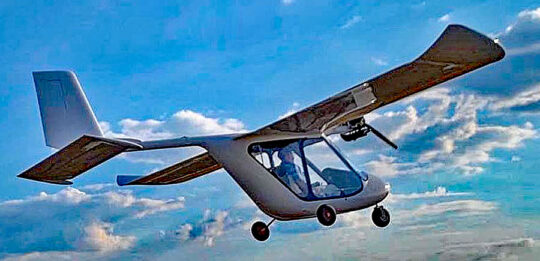 Later, American companies — which had been relegated to building kit aircraft due to regulations at the time — joined the growing parade. Today American-made LSA represent better than half of total registrations.
Of course, U.S.-based kit-aircraft makers continue to do well as my
Later, American companies — which had been relegated to building kit aircraft due to regulations at the time — joined the growing parade. Today American-made LSA represent better than half of total registrations.
Of course, U.S.-based kit-aircraft makers continue to do well as my  Call them sleeper aircraft if you will. The 103 industry labored behind a thick curtain emblazoned with all things LSA on the public side. If you noticed anything going on behind the curtain, you were the exception.
Along the way, however, things had been changing. I can't date when this happened but I would estimate that it started to get legs approximately five to seven years ago, after the first decade of LSA had passed. At first, I was not aware of this market interest and from speaking to numerous producers, I found they didn't know either. Each manufacturer essentially operated within their own bubble, selling to people who admired what they were doing, but… who else knew?
As LSA held the spotlight, and as many GA pilots made the transition from more complex and costly conventionally-certified aircraft, they begin asking suppliers to fit more and more features on the airplanes. The airframes themselves went through a generation or two of change and became much more sophisticated and capable. The downside: they got more expensive, too.
Call them sleeper aircraft if you will. The 103 industry labored behind a thick curtain emblazoned with all things LSA on the public side. If you noticed anything going on behind the curtain, you were the exception.
Along the way, however, things had been changing. I can't date when this happened but I would estimate that it started to get legs approximately five to seven years ago, after the first decade of LSA had passed. At first, I was not aware of this market interest and from speaking to numerous producers, I found they didn't know either. Each manufacturer essentially operated within their own bubble, selling to people who admired what they were doing, but… who else knew?
As LSA held the spotlight, and as many GA pilots made the transition from more complex and costly conventionally-certified aircraft, they begin asking suppliers to fit more and more features on the airplanes. The airframes themselves went through a generation or two of change and became much more sophisticated and capable. The downside: they got more expensive, too.
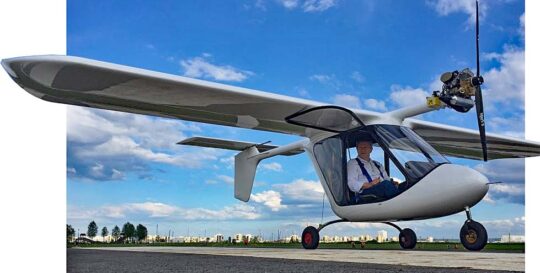 LSA brought many great things to the marketplace and I remain as excited about them as ever. Not only did this new breed of aircraft permit pilots to acquire some sophisticated, fuel-efficient, and modern aircraft, LSA allowed many pilots to forego their next aviation medical and they were able to keep flying without that limiting factor (yet still earning an admirable safety record, I hasten to add).
While LSA are available below $100,000, many have gone far above that even exceeding $200,000 or even $300,000. For many pilots that's not only too much money, it's more capability than they needed simply to go aloft for a bit of aerial sightseeing at the end of a pretty day.
LSA brought many great things to the marketplace and I remain as excited about them as ever. Not only did this new breed of aircraft permit pilots to acquire some sophisticated, fuel-efficient, and modern aircraft, LSA allowed many pilots to forego their next aviation medical and they were able to keep flying without that limiting factor (yet still earning an admirable safety record, I hasten to add).
While LSA are available below $100,000, many have gone far above that even exceeding $200,000 or even $300,000. For many pilots that's not only too much money, it's more capability than they needed simply to go aloft for a bit of aerial sightseeing at the end of a pretty day.
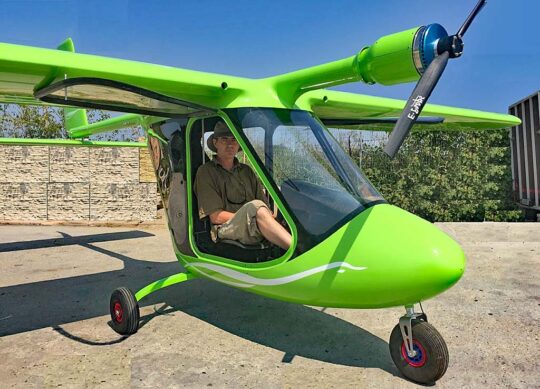 As I labored throughout 2021 to find every Part 103 ultralight vehicle I could uncover — now presented in the warmly-received
As I labored throughout 2021 to find every Part 103 ultralight vehicle I could uncover — now presented in the warmly-received 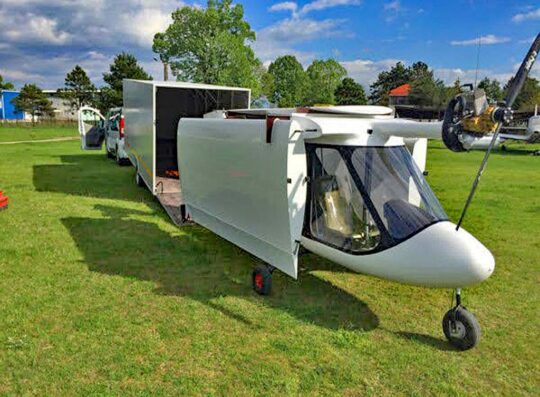 This company offers a Part 103-capable vehicle and has both
This company offers a Part 103-capable vehicle and has both 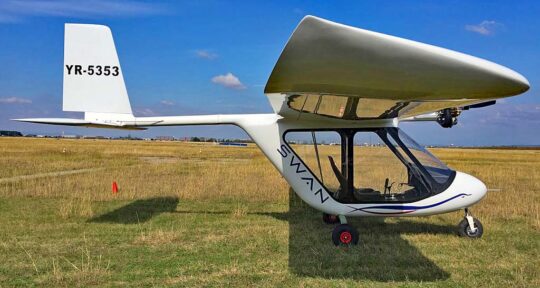 After she tested positive and then showed the effects, it was just a matter of time before I did, too (we've been vaccinated). As endless articles show, the omicron variant is quite transmissible, but fortunately, it's less serious than the earlier variants.
We are both recovering now although dealing with this slowed my productivity. I trust you'll understand if my output has not been what it usually is. By this time next week I expect to be fully back on track and bringing you more news about light, recreational, affordable aircraft. Thanks for understanding.
After she tested positive and then showed the effects, it was just a matter of time before I did, too (we've been vaccinated). As endless articles show, the omicron variant is quite transmissible, but fortunately, it's less serious than the earlier variants.
We are both recovering now although dealing with this slowed my productivity. I trust you'll understand if my output has not been what it usually is. By this time next week I expect to be fully back on track and bringing you more news about light, recreational, affordable aircraft. Thanks for understanding.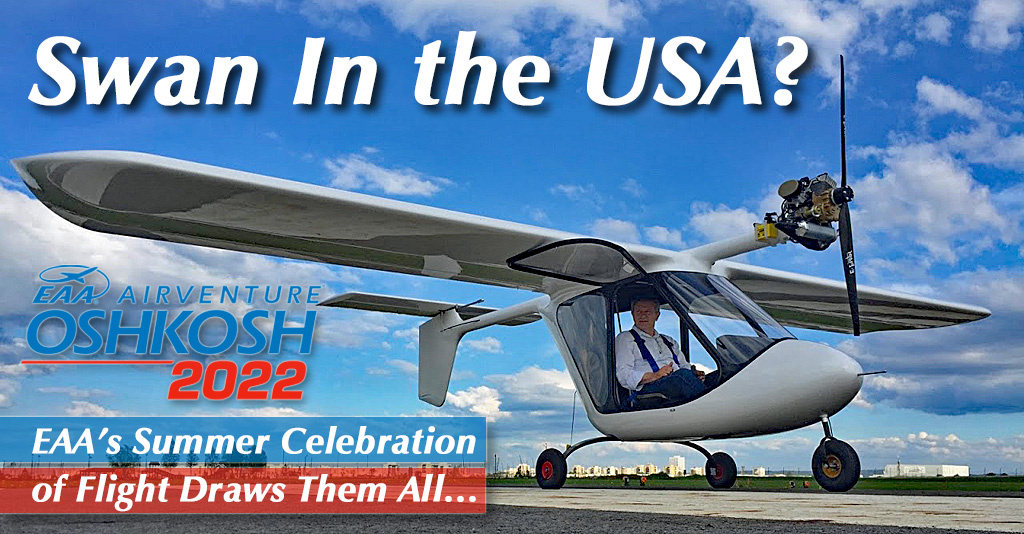
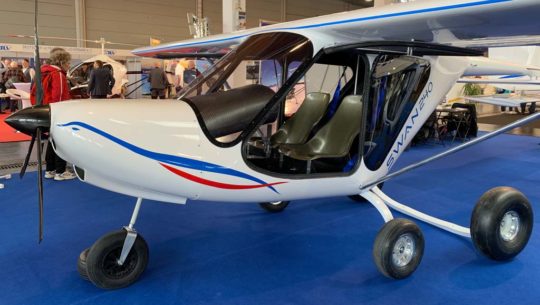 To select another aircraft type means going out on a tree limb. This is especially true with what I call "alternative aircraft" — weight shift trikes, powered parachutes, motorgliders, and gyroplanes. It would include lighter-than-air, too, if we had more than
To select another aircraft type means going out on a tree limb. This is especially true with what I call "alternative aircraft" — weight shift trikes, powered parachutes, motorgliders, and gyroplanes. It would include lighter-than-air, too, if we had more than 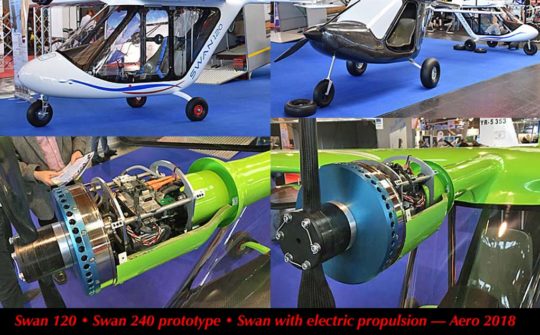 That's great. Swan 120 is reportedly a well-flying aircraft; I have not had the chance yet.
Yet lots of potential buyers may prefer a two seater and as the video below shows, I did see a finished version of such at
That's great. Swan 120 is reportedly a well-flying aircraft; I have not had the chance yet.
Yet lots of potential buyers may prefer a two seater and as the video below shows, I did see a finished version of such at 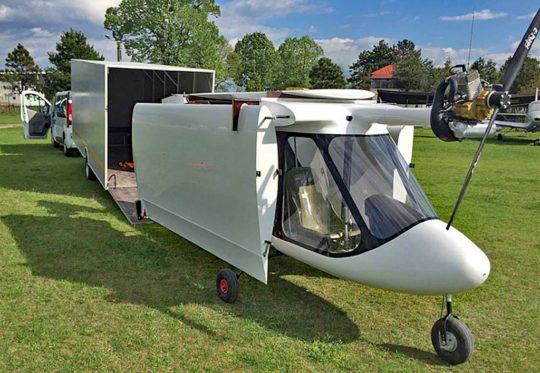 Radu owns a larger company, Avi, in Romania where he makes all sorts of industrial composite components for trains, aircraft, and backyard swimming pools. He's an aeronautical engineer with 25 years experience in composite construction. As with similar companies, the airplane portion of the business is a smaller segment of the overall enterprise although Berceanu is very passionate about aviation.
Unlike Swan 120 that qualifies as a 120 Kilo Class aircraft under German rules, a two-seat Swan 240 at about twice the weight must earn approval in a higher class. Peter observed, "Swan 240 [cannot use rules for] Swan 120 Europe-wide."
Instead, Swan 240 must qualify under EASA rules or those from the CAA of each European country. While rules in many countries are similar for light aircraft, they are not identical. "It is still not quite clear what max takeoff weight Swan 240 is allowed to have, 600 or 640 kilograms," clarified Peter. "The rules are different, which is one of the reasons why we still wait a little bit."
In the USA, Swan 240 would have to be a kit or go through the approval process for Light-Sport Aircraft (no small task).
Radu owns a larger company, Avi, in Romania where he makes all sorts of industrial composite components for trains, aircraft, and backyard swimming pools. He's an aeronautical engineer with 25 years experience in composite construction. As with similar companies, the airplane portion of the business is a smaller segment of the overall enterprise although Berceanu is very passionate about aviation.
Unlike Swan 120 that qualifies as a 120 Kilo Class aircraft under German rules, a two-seat Swan 240 at about twice the weight must earn approval in a higher class. Peter observed, "Swan 240 [cannot use rules for] Swan 120 Europe-wide."
Instead, Swan 240 must qualify under EASA rules or those from the CAA of each European country. While rules in many countries are similar for light aircraft, they are not identical. "It is still not quite clear what max takeoff weight Swan 240 is allowed to have, 600 or 640 kilograms," clarified Peter. "The rules are different, which is one of the reasons why we still wait a little bit."
In the USA, Swan 240 would have to be a kit or go through the approval process for Light-Sport Aircraft (no small task).
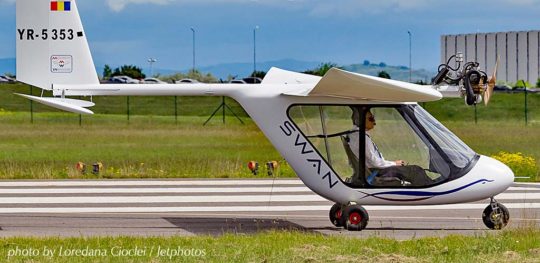
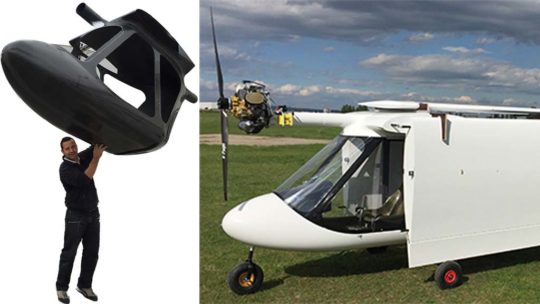 Transport & Storage
Transport & Storage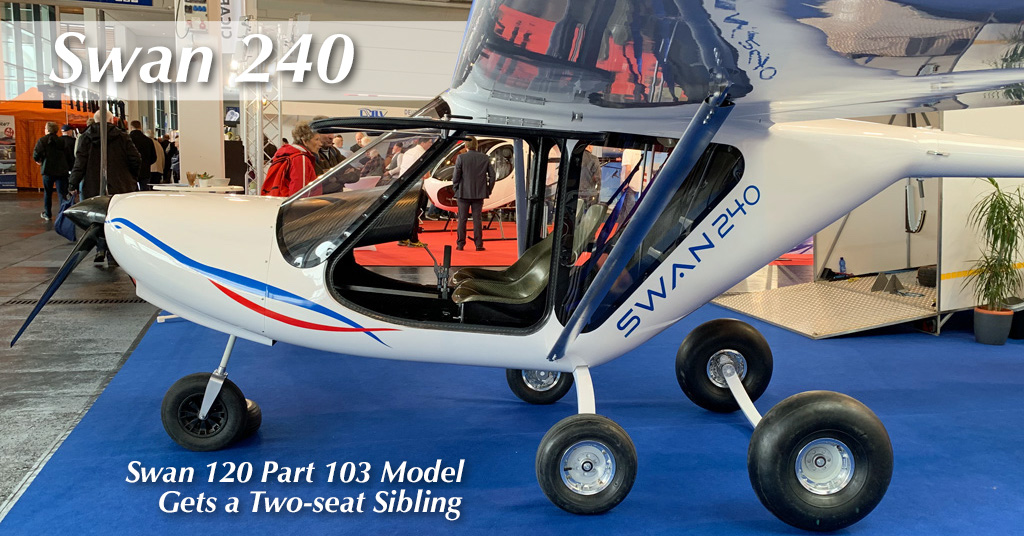
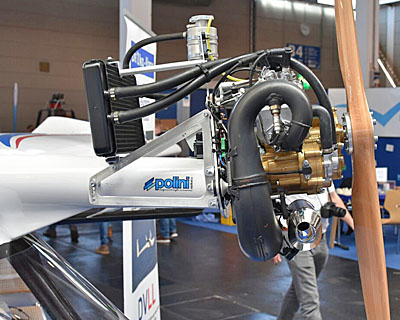
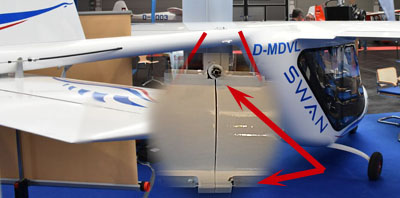
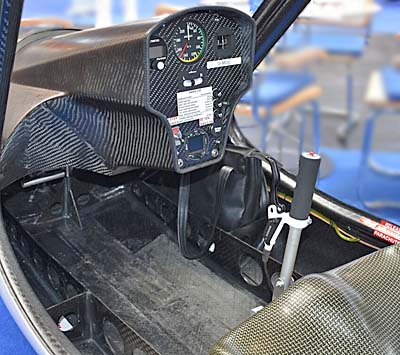 From the beginning, Swan was planned with an enclosed cockpit so the pilot could be comfortable in low temperatures without needing a bulky flight suit. A cockpit heating system can be added as an option. Two ventilation systems are provided; one to prevent the windscreen fogging during taxi and another to supply fresh air. Alternatively, when the weather is hot, "the door can be simply removed," said Radu.
From the beginning, Swan was planned with an enclosed cockpit so the pilot could be comfortable in low temperatures without needing a bulky flight suit. A cockpit heating system can be added as an option. Two ventilation systems are provided; one to prevent the windscreen fogging during taxi and another to supply fresh air. Alternatively, when the weather is hot, "the door can be simply removed," said Radu.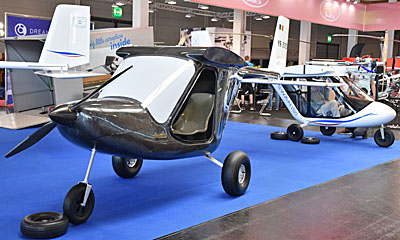
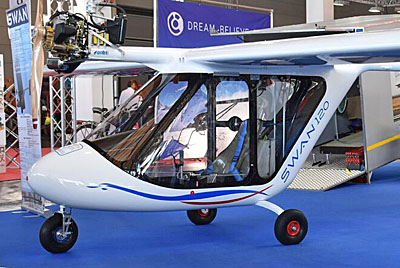
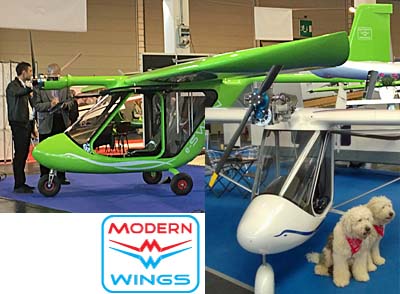
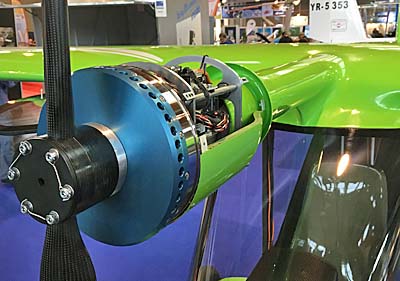 SWAN is a single-seater ultralight aircraft created and manufactured by
SWAN is a single-seater ultralight aircraft created and manufactured by 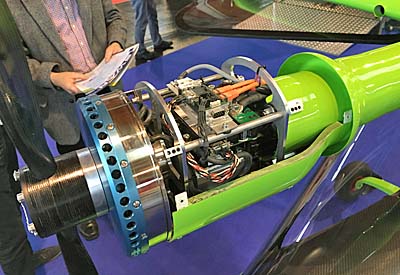 The Romanian company displayed a standard Polini-equipped aircraft at Aero 2017, but also had a Geiger-equipped alternative. This was still as a prototype, Roy clarified.
"The installation of the electric motor was very clean, with the boom-mounted powerplant located right where the typical gasser engine would be," observed Roy. "The battery installation on this one is better than on some designs, which pack the batteries into the existing engine compartment." Instead, batteries for Swan were mounted under the passenger seat, which no doubt improves the center of gravity and stability of the aircraft. It would also seem safer in the event of a poor landing or other mishap.
"Swan was just one example of electric power being offered, or soon to be offered right next to gasoline-powered aircraft at Aero 2017," concluded Roy. Learn more about Swan at
The Romanian company displayed a standard Polini-equipped aircraft at Aero 2017, but also had a Geiger-equipped alternative. This was still as a prototype, Roy clarified.
"The installation of the electric motor was very clean, with the boom-mounted powerplant located right where the typical gasser engine would be," observed Roy. "The battery installation on this one is better than on some designs, which pack the batteries into the existing engine compartment." Instead, batteries for Swan were mounted under the passenger seat, which no doubt improves the center of gravity and stability of the aircraft. It would also seem safer in the event of a poor landing or other mishap.
"Swan was just one example of electric power being offered, or soon to be offered right next to gasoline-powered aircraft at Aero 2017," concluded Roy. Learn more about Swan at